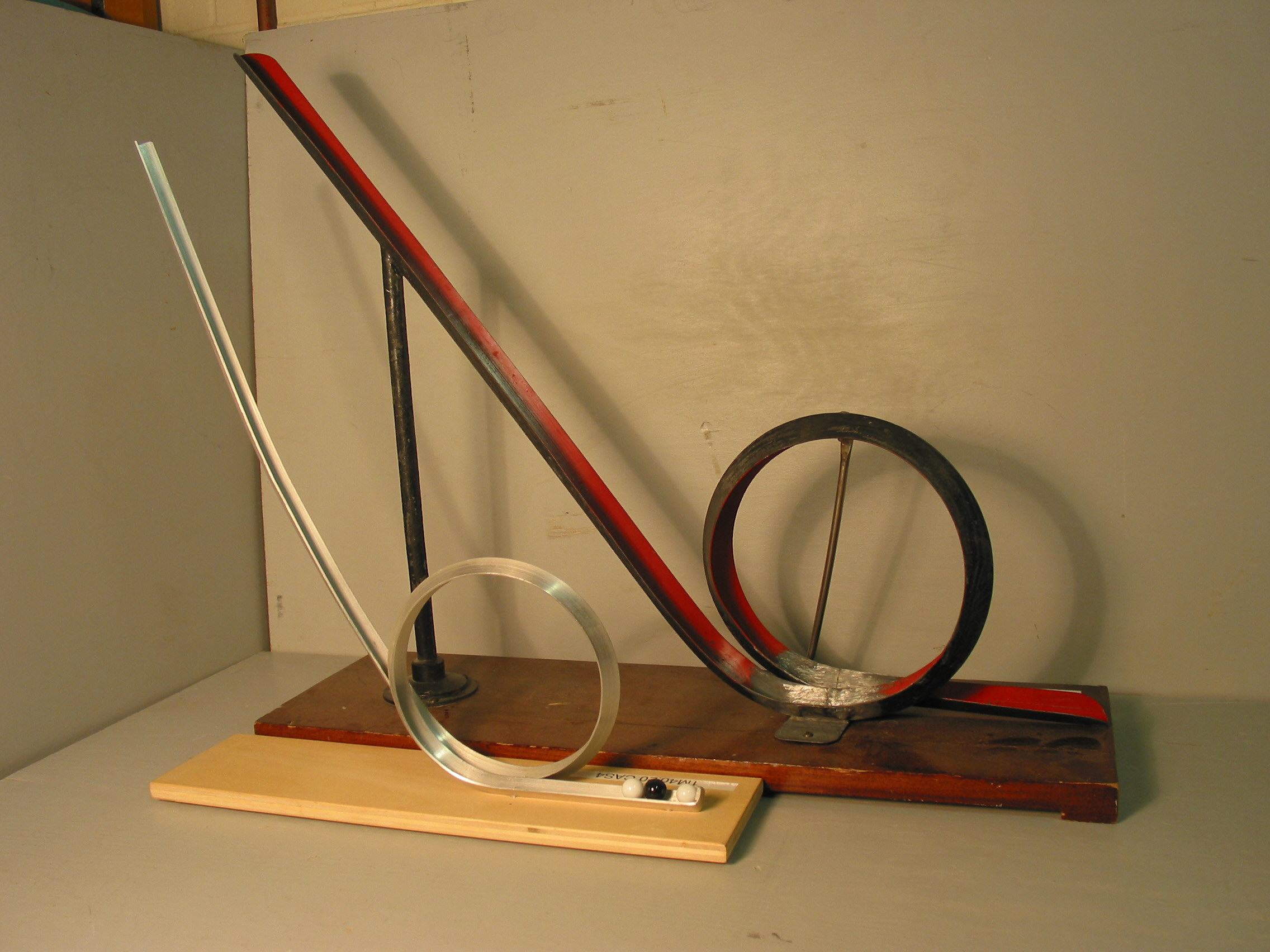

PURPOSE: To apply the ideas of conservation of energy in a rotating object and centripetal force.
DESCRIPTION: Motion of the ball down the track and around the loop-the-loop can be described in terms of gravitational potential energy, rotational and translational kinetic energy, and centripetal force. A ball of mass m and radius r must be released at some minimum height h above the bottom point of the track so that it will not leave the track while passing around the loop-the-loop. In order to stay on the track at the top of the loop the centrifugal reaction of the ball on the track must be equal to or greater than the gravitational force on the ball: mv^2/R = mg, or v^2 = gR, where v is its linear velocity at the top of the loop, R is the radius of the loop, and g is the acceleration of gravity. Conservation of energy dictates that at the top of the loop Iw^2/2 + mv^2/2 +2mgR = mgh, where the moment of inertia of the ball I = 2mr^2/5 and w is the angular velocity of the ball at the top of the loop. From these considerations we obtain the minimum starting height for the ball above the bottom of the loop-the-loop in order that the ball remain in contact with the track at all times: h = 2.7 R. In the case of an object sliding along a frictionless loop-the-loop, the height would be h = 2.5 R. Marks have been made at the points 2.5 R and 2.7 R. The ball remains in contact with the track at the top of the loop only when the height 2.7 R is reached, demonstrating the effect of the rotation of the rolling ball.
SUGGESTIONS:
EQUIPMENT: Loop-the-loop, as photographed, with superball.
SETUP TIME: 5 min.
 |
 |
 |
 |
 |